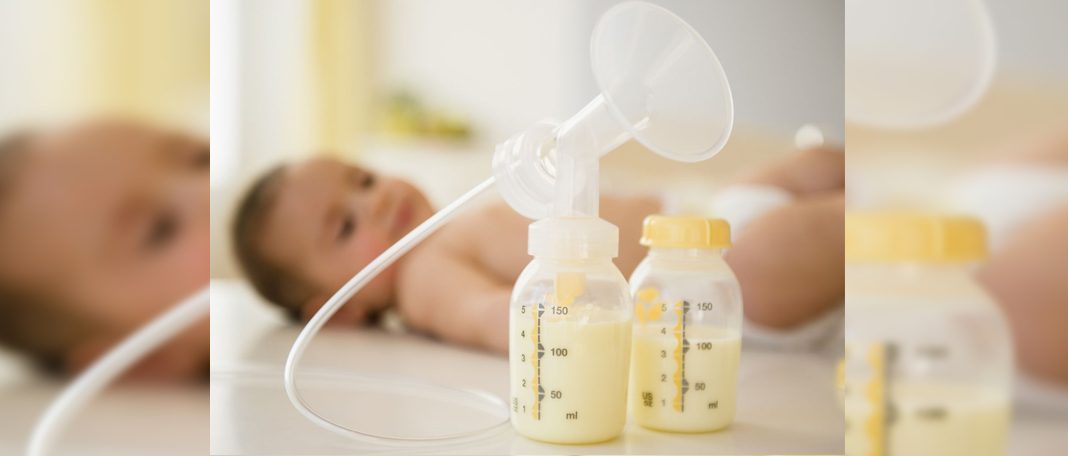Breast milk, the most nutritious and purest form of energy source, plays a vital role in building the child’s immune system and bonding with the mother while preventing several other infections. This essential and uncontaminated form has turned fatal and killed an infant, resulting in infection from a breast pump. A breast pump is used to pump milk from the mother for nursing later. A rare infection due to contamination in the breast pump led to the tragic end. Here are points for understanding the risks of using a contaminated breast pump for infants for those who handle infants and feed them using a breast pump should note and beware of.
What caused the death?
Cronobacter sakazakii bacteria led to the fatal infection in the baby linked to contaminated breast pump use and eventual death. It is a rare bacterial infection caused by a contaminated breast pump. The child was fed a combination of breast milk and a human milk fortifier. The samples of milk tested negative for any contamination, but the source of infection was apparently the moisture that remained in the pump after washing and sanitizing. The bacteria must have made its way while assembling the pump, after cleansing it in the sink in the household. The breast pump used in the hospital also has no signs of infection, making the origin quite clear.
How do you know if your breast milk is contaminated?
Breast milk is typically safe and contains essential nutrients for a baby’s growth and development. However, in rare cases, breast milk may become contaminated, potentially posing risks to the baby’s health. Here are some signs that your breast milk might be contaminated:
- Off Odor or Color: If your breast milk has an unusual or foul odor, or if it appears discolored, it could be an indication of contamination.
- Unexplained Illness in the Baby: If your baby consistently shows signs of illness, such as vomiting, diarrhea, or fever, and no other apparent cause is found, it’s essential to consider the possibility of contaminated breast milk.
- Milk Spoilage: Proper storage of breast milk is crucial to prevent contamination. If breast milk has been left at room temperature for an extended period or not refrigerated or frozen correctly, it may become contaminated.
- Mom’s Illness: If the breastfeeding mother becomes sick due to a bacterial or viral infection, there is a possibility that the breast milk could be contaminated during that time.
- Medication or Substance Use: Certain medications or substances taken by the breastfeeding mother may pass into breast milk and contaminate it, potentially harming the baby.
If you suspect that your breast milk may be contaminated, it is essential to consult with a healthcare professional promptly. They can assess the situation, provide guidance on safe breastfeeding practices, and ensure the well-being of both the mother and baby.
What happens if a baby drinks contaminated breast milk?
If a baby drinks contaminated breast milk, they may experience various adverse effects, depending on the type and level of contamination. Some potential consequences include:
- Gastrointestinal Disturbances: Contaminated breast milk may cause gastrointestinal issues such as vomiting, diarrhea, or stomach discomfort in the baby.
- Food Poisoning: Bacterial contamination in breast milk can lead to food poisoning symptoms like nausea, vomiting, abdominal cramps, and fever.
- Infections: Contaminated breast milk can transmit infections to the baby, potentially leading to respiratory, urinary tract, or other types of infections.
- Dehydration: Severe gastrointestinal disturbances caused by contaminated breast milk may lead to dehydration in the baby.
- Allergic Reactions: Certain contaminants in breast milk, such as medications or allergens, may trigger allergic reactions in sensitive babies.
It’s essential for breastfeeding mothers to practice proper hygiene, ensure safe breast milk storage, and monitor their own health to reduce the risk of breast milk contamination.
Best Practices for Breast Pump Hygiene:
- Provide a list of best practices to maintain a clean and safe breast pump:
- Wash hands thoroughly before handling the breast pump or its components.
- Disassemble the pump and wash all parts that come into contact with breast milk after each use.
- Use warm soapy water and a brush specifically designed for cleaning breast pump parts.
- Rinse all parts thoroughly to remove any soap residue.
- Dry the parts completely before reassembling or storing them.
- Follow the manufacturer’s instructions regarding sterilization methods and frequency.
- Avoid using shared or second-hand breast pump equipment unless it has been properly sanitized.
- Regularly inspect the pump for wear and tear, and replace any worn-out or damaged parts promptly.
- Be aware of any recalls or safety alerts related to the specific breast pump model being used.
Conclusion: The tragic incident involving the death of a baby due to a rare infection linked to a contaminated breast pump serves as a somber reminder of the importance of proper hygiene and maintenance when using these devices. Breastfeeding mothers should adhere to recommended guidelines for cleaning and sterilizing breast pump equipment to ensure the safety and well-being of their infants.
















